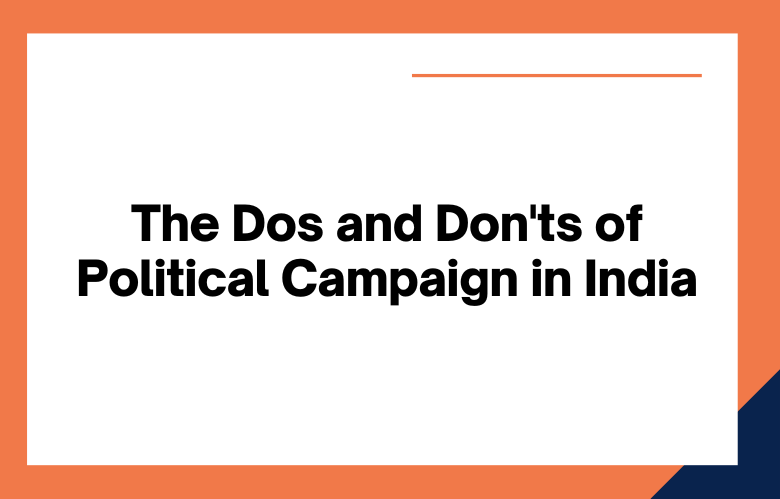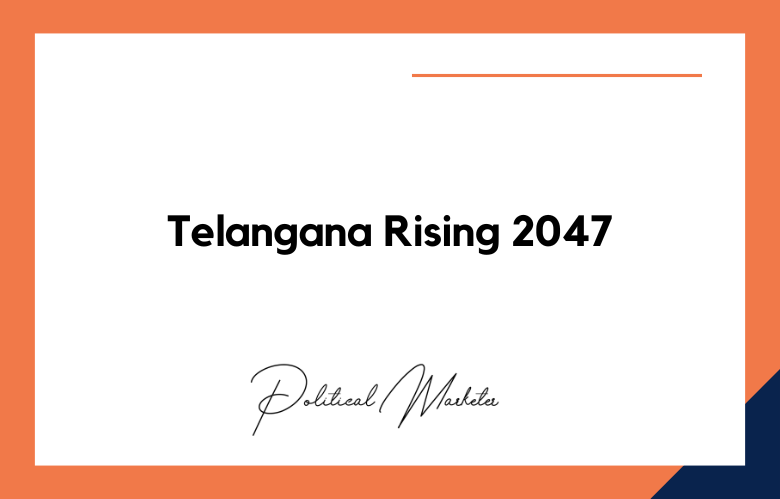Social media has become an integral part of political campaigning in India. With more than 500 million active internet users, it is no surprise that India has one of the largest online communities in the world.
This has made social media an invaluable tool for politicians seeking to reach a broad audience and make their voices heard.
Politicians need to understand how to effectively use social media platforms like Facebook, Twitter, Instagram, and YouTube to maximize the impact of their campaigns.
What is social media political campaigning in India, and what effective ways to utilize it?
India is the world’s largest democracy, and the way political campaigns are conducted in the country is no exception.
The introduction of social media has allowed candidates to reach a larger, more diverse population of voters than ever before.
As technology continues to evolve, so too does how campaigns run. Let’s explore how social media political campaigning affects India’s elections and how it can be used effectively.
How is Social Media Changing Political Campaigning in India?
As the 2020 Indian General Elections approach, political candidates are looking for ways to connect with voters on a more personal level. In recent years, social media has become an integral part of India’s political process worldwide.
From Facebook and Twitter to WhatsApp and Instagram, politicians use various platforms to reach out to potential supporters and increase their visibility. But what are the most effective ways to utilize social media during a political campaign?
The Power of Social Media in Political Campaigning in India:
Social media has become an increasingly powerful tool for political campaigns in India.
Many candidates have used social media platforms to reach potential voters and promote their messages in recent years.
How important is social media in political campaigning in India, and how can it be most effectively utilized?
The Advantages of Social Media for Political Campaigning:
Social media is a powerful platform for political campaigns because it’s fast-paced and interactive.
Politicians can quickly spread their message across various platforms, connecting with millions of people in just minutes.
We also allow candidates to engage directly with their constituents, allowing them to listen to what they say and adjust their platform accordingly.
Furthermore, with the help of analytics tools such as Google Analytics or Facebook Insights, politicians can measure the effectiveness of their campaigns in real time and make adjustments as needed.
Best Practices for Utilizing Social Media Platforms:
Politicians should follow certain best practices to maximize the impact of social media campaigns.
Firstly, politicians should create content that resonates with their target audience and post regularly to keep followers engaged. Secondly, photos and videos are great tools for conveying messages quickly; utilize them often!
Thirdly, polls are great for gauging public opinion on various issues; use them liberally! Finally, remember search engine optimization (SEO); optimizing your content will help you reach more people who might be interested in your campaign.
The Rise of Social Media in Indian Politics
In recent years, social media has become a significant part of the political process in India.
Political candidates can now utilize platforms such as Twitter, Facebook, Instagram, and YouTube to reach their target audiences and engage with them more personally than ever before.
This has enabled candidates to spread their message widely and quickly to people who may not have otherwise been exposed to it.
One of the most effective ways for candidates to use social media is by creating content that appeals directly to their target voter demographic.
For example, candidates looking to appeal to younger voters can post videos or pictures on Instagram highlighting their policies and values.
Similarly, if they’re targeting an older demographic, they can take advantage of Twitter’s live-streaming capabilities and host Q&A sessions where voters can ask questions.
Social Media and Political Campaigning in India
Social media has become an increasingly important tool for political campaigning in India. It allows politicians to communicate directly with their constituents and reach a larger audience.
This blog post will explore how Indian politicians use social media, what strategies work best, and how they can be used more effectively.
The Role of Social Media in Indian Politics
Social media has made it easier than ever for Indian politicians to reach potential voters.
Politicians use Facebook, Twitter, Instagram, and other platforms to share their messages and engage with their constituents.
Not only does this allow them to spread their message quickly, but it also provides them with direct feedback from the people they are trying to represent.
This can be invaluable information that can help inform future campaign decisions.
Most Effective Strategies
Specific strategies have repeatedly proven adequate When using social media for political campaigns in India.
One of the most important things is to create an engaging narrative that resonates with your audience.
This means crafting a story around your message that is both compelling and relatable.
Focus on utilizing visuals as much as possible—photos, videos, or infographics can all be great tools for making your message stand out.
Additionally, remember to interact with your supporters—this can be a great way to build relationships and increase engagement with your content.
Making the Most of Your Social Media Presence
Finally, if you want your social media presence to succeed in India’s political landscape, ensure you take advantage of each platform’s offerings.
For example, on Twitter, you should use hashtags to reach more people; on Instagram, you should focus on creating beautiful visuals; on Facebook, you can create polls that engage users, etcetera.
You can utilize each platform for maximum effectiveness in many ways, so research before launching any campaigns!
Conclusion:
If used correctly, social media can be a powerful tool for political campaigning in India.
By creating engaging content and utilizing analytics tools such as SEO, candidates can ensure their message reaches many potential voters and helps them increase their political clout across India’s digital landscape.
As more Indians come online daily, it is becoming increasingly important for politicians to use social media to gain visibility and influence within the country.
Call: +91 9848321284
Email: [email protected]
How Important is social media in political campaigning in India: FAQs
Why Is Social Media Important In Indian Political Campaigning?
Social media allows political leaders to directly engage with millions of voters, shape narratives, and mobilize support in real time without relying on traditional media.
How Has Social Media Changed Election Strategies In India?
It has shifted campaigns from door-to-door outreach to digital-first strategies, emphasizing data-driven targeting, meme culture, influencer engagement, and rapid response units.
Which Social Media Platforms Are Most Effective For Indian Politicians?
Facebook, Instagram, YouTube, WhatsApp, and X (formerly Twitter) are among the top platforms, each catering to different voter demographics and content types.
Can Regional Language Content Make A Difference On Social Media?
Yes, vernacular content improves relatability and engagement, especially in Tier 2 and Tier 3 regions, making it a vital component of regional outreach.
How Do Political Campaigns Leverage Facebook In India?
Campaigns use Facebook to run targeted ads, livestream rallies, publish content in local languages, and interact with voter comments and queries.
What Is The Role Of WhatsApp In Indian Political Campaigns?
WhatsApp is used for closed-group communications, rapid content dissemination, voter mobilization, and rumor control through localized volunteer networks.
How Can Instagram Reels Be Used In Political Campaigns?
Reels are used to share short, engaging videos that humanize candidates, promote campaign messages, or go viral with trending hashtags and music.
What Kind Of Content Works Best For Political Campaigns On Social Media?
Videos, infographics, emotional storytelling, behind-the-scenes clips, citizen testimonials, and live Q&A sessions resonate most with voters.
How Do Campaigns Use Influencer Marketing In Indian Elections?
By partnering with regional or youth influencers, campaigns can expand their message organically among niche communities and younger demographics.
How Do Political Leaders Manage Negative Comments Or Trolls On Social Media?
They typically deploy social media listening teams to monitor sentiment and use moderation strategies while crafting counter-narratives when needed.
What Metrics Determine Social Media Success In Political Campaigns?
Key metrics include engagement rate, follower growth, video views, shares, sentiment analysis, and lead conversions (volunteer sign-ups, event participation).
How Can Politicians Build Trust On Social Media?
Consistent messaging, authenticity, timely responses, and showcasing on-ground impact through photos and testimonials help build trust with the public.
Do Rural Voters Engage On Social Media Platforms?
Thanks to mobile penetration and affordable data, rural voters are increasingly active, especially on WhatsApp and YouTube in regional languages.
How Can Social Media Help In Voter Registration Drives?
Campaigns run awareness ads and share step-by-step guides to help young or first-time voters register ahead of elections.
What Role Do Hashtags Play In Political Messaging?
Hashtags help centralize campaign narratives, increase visibility during trends, and rally online communities around issues or slogans.
Is Paid Advertising Effective For Political Campaigning On Social Media?
Yes, paid ads allow precise demographic and interest targeting, ensuring that key messages efficiently reach the right voter segments.
Can Social Media Replace Traditional Rallies And Door-To-Door Campaigning?
While social media amplifies reach, it complements rather than replaces physical campaigning, especially in rural or low-connectivity areas.
How Should Political Leaders Respond To Fake News On Social Media?
Leaders should issue clarifications quickly, use fact-checkers, and partner with platforms to report and remove misinformation promptly.
How Important Is Visual Branding On Social Media?
A strong visual identity—color schemes, slogans, logos—ensures brand recall, especially across diverse content formats like stories, thumbnails, and memes.
What Are Some Risks Of Using Social Media In Political Campaigns?
Risks include data privacy violations, deepfake circulation, echo chambers, and spreading hate speech or misinformation rapidly.











